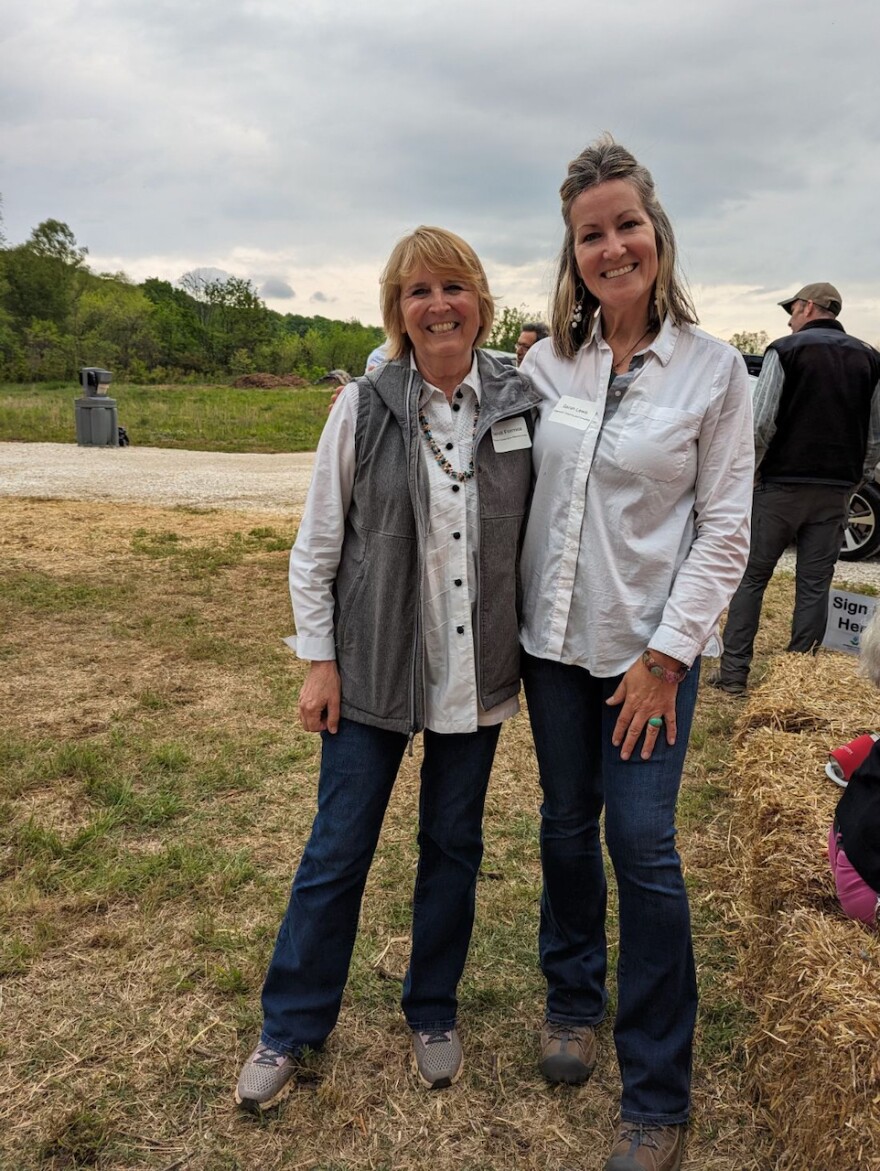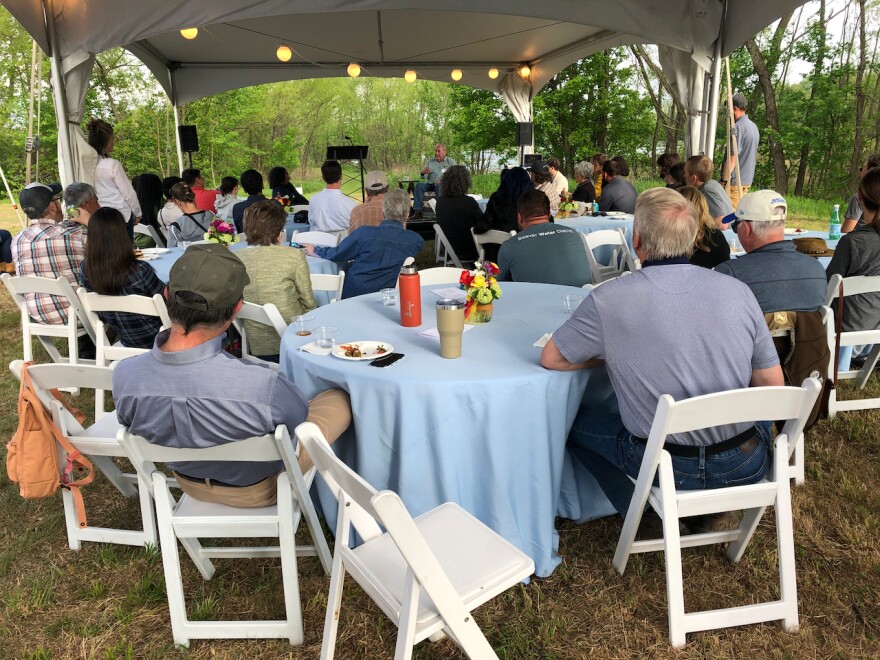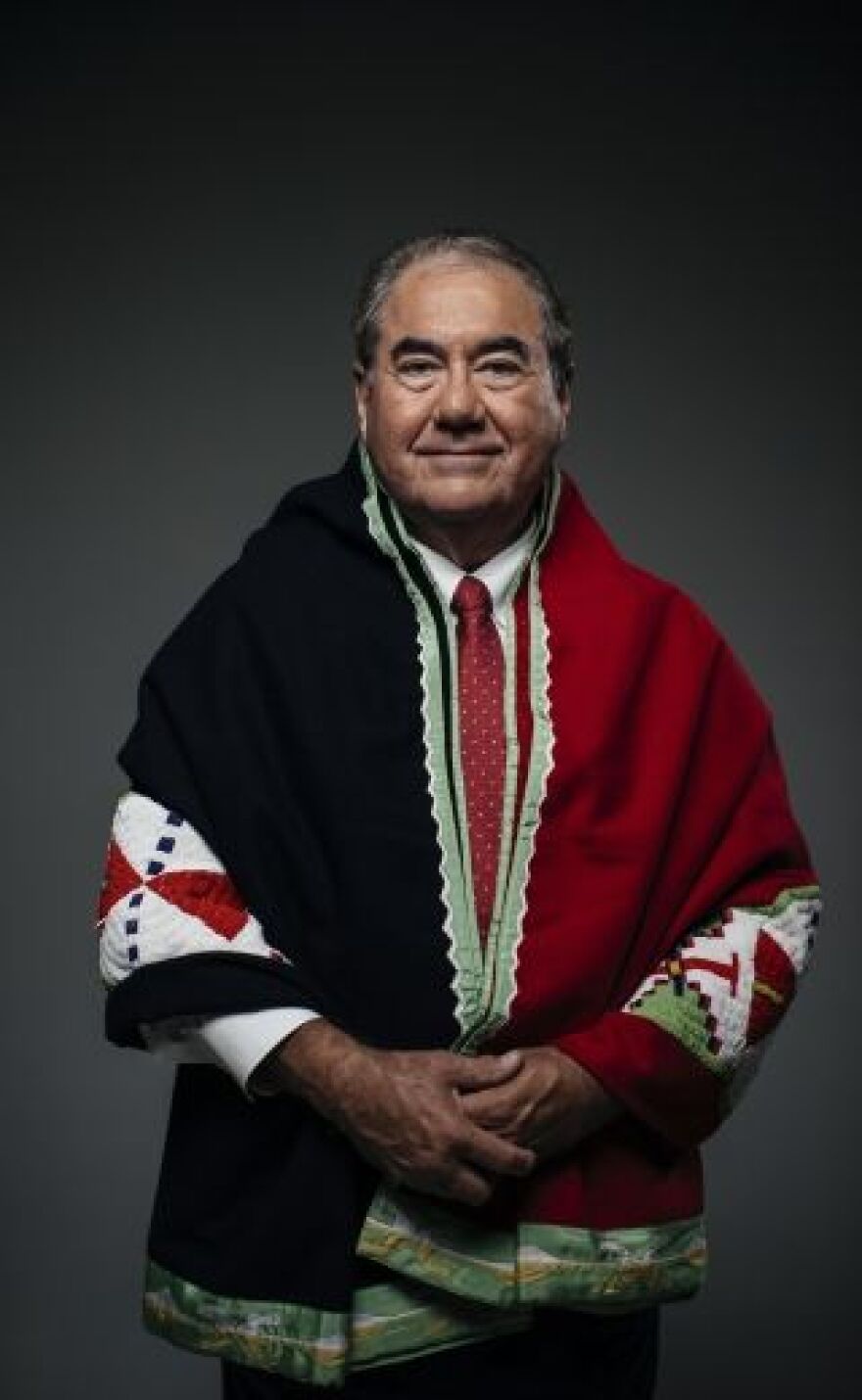Watershed Conservation Resource Center, in partnership with the city of Fayetteville, is restoring a degraded 100-acre wetland prairie along Dead Horse Mountain Road on the West Fork of the White River. The property, purchased in 2019, is the future site of The River Commons & Institute. Matthew Van Eps is the center's co-founder and associate director.
"It's a site where the public can come and experience nature and learn about ecology," Van Eps said. "Most of the acreage is within the hundred-year floodplain so most of its susceptible to flooding. We're at the beginning stages of restoring this site to its fullest potential. Eventually portions will be turned into what is known as the mitigation bank to help offset the impacts from development in our region. And so not only is it a place to learn, it’s also a place to absorb some of the development pressures that we're all experiencing in northwest Arkansas."
Watershed Conservation Resource Center staff are conducting seasonal control burns to eradicate non-native pasture grasses, encouraging native prairie species to flourish. The team is also clearing invasive plants and shrubs and installing greenhouse-cultivated native riparian plants and trees. An abandoned illegal dirt mine on the property is being transformed into a 25-acre wetland pond, this evening covered with blooming water lilies that work to filter out sediment and agricultural chemicals.

As visitors arrive for this evening's River Coalition Gathering, WCRC staff provide tours along the pond's berm trail and onto a high prairie overlook. Watershed specialist Kelly Carr points to birds soaring overhead.
"We are watching redwing blackbirds flying in and out of the common rush, juncus effusus, doing their evening hunting, looking for bugs near the surface of the water," Carr said.
Melodious redwing blackbird populations, rapidly declining due to wetland habitat loss and climate change, are once again re-inhabiting this rich aquatic ecosystem.
"Oh yea, the West Fork runs right through the property," he said. "At flood stage, the river will completely inundate this prairie, where it will overflow into our pond and you know that brings in new species and that takes species from the pond down river. We have a lot of beaver activity here that really helps with habitat heterogeneity, referring to basically differences in habitat that help biodiversity."
Carr said he's spotted all sorts of native snakes, frogs, prairie lizards and turtles thriving on this wetland.

Watershed Conservation Resource Center founder and executive director Sandi Formica said this River Coalition gathering provides a formal introduction for city leaders, cultural stakeholders and patrons to the new preserve. The nonprofit water quality group is seeking financial help to complete site restoration and for the construction of the future River Commons & Institute.
"It's in our heart to not only restore this property but to share it with the community," Formica said. "So we're hoping that through our efforts at the River Commons & Institute we can have more interest in these type of ecosystems and environmental protection."

An award-winning architectural rendering of the future 26,000-square-foot Riverine Commons and Institute by the University of Arkansas Community Design Center was lauded as having a strong environmental agenda with lots of accommodating public space.
"You rarely see [that combination] with these restorative projects,” stated a juror and Fellow of the American Institute of Architects, about the rendering. Formica said the River Commons & Institute focus is both on the site's ecological significance but cultural history as well.
"And so cultural history includes the Osage People who lived and hunted on this property," Formica said. "Later it was farmed by by Euro-Americans, who enslaved African Americans to work this land. We want to acknowledge and recognize the people that were here before and so that's a really important part of our education efforts."

Geoffrey Standing Bear, Principal Chief of the Osage Nation headquartered in Pawhuska, Oklahoma, delivered a talk on Osage history at the gathering, along with Osage speaker Cameron Pratt who offered a prayer before refreshments were served. Chief Standing Bear noted that the Osage language has not been spoken on this prairie for nearly two centuries.
"The Osage people lived here for a long time, along with our sister tribes the Quapaw, Kaw to the west, and to the north the Ponca and Omaha," he said.

"We were all related. We had two treaties with the United States of America in particular for this area right here, in 1808 and 1818, since the Lewis and Clark expedition in 1804. After the Louisiana Purchase things change rapidly in this this area, so we regretfully signed these treaties. We didn't have a central government, so a lot of the Osage at that time felt like they were not consulted. We are still a traditional people, we're still a prayerful people, we are sensitive to our place in the world, which is a place within nature and so we must take care of each other and this world that God's given us. And so we are still here."
United Keetoowah Band of Cherokee Indians Chief Joe Bunch, headquartered in Tahlequah, Oklahoma, also attended. He acknowledged the importance of restoring this historic prairie parcel on which his tribe once subsisted, pre-settlement.

"We were a buffer between the Osages," Bunch said. "We were in the middle. The Quapaw were to the south of us. Our land based at that time stretched from north of Fort Smith going towards Branson, Missouri."
Sharon Killian, president and co-founder of Northwest Arkansas Black Heritage, said enslaved African Americans were held captive on this watershed.
"I think it is a perfect synergy for us to be able to represent," Killian said of her group's presence. "And when you walk on the Earth, it gives you a chance to feel, because not much has been spoken about this."

Sarah Lewis, CEO of Edgewater Coaching and Consulting, serves on the board of Watershed Conservation Resource Center.
"In this time of division and polarization, this is a vision to create connection between people, with ourselves, with the natural and cultural heritage that is so important," Lewis said. "Together with the Native American cultures that have historically were on this site, the African American cultures who were enslaved on this site, and Euro-American cultures [which persist] brings about a new narrative of collaboration and connection. We're excited about it."
The public is welcome to explore The River Commons & Institute of Northwest Arkansas online or in person — a planned world-class environmental and eco-cultural training hub.
Listen to a speech delivered at the gathering by Osage Chief Geoffrey Standing Bear, and view a short film of the River Commons and Institute wet prairie preserve, a teaser for a documentary project produced by Evan Diego Alvarado of Aenimate Media Productions, LLC.








